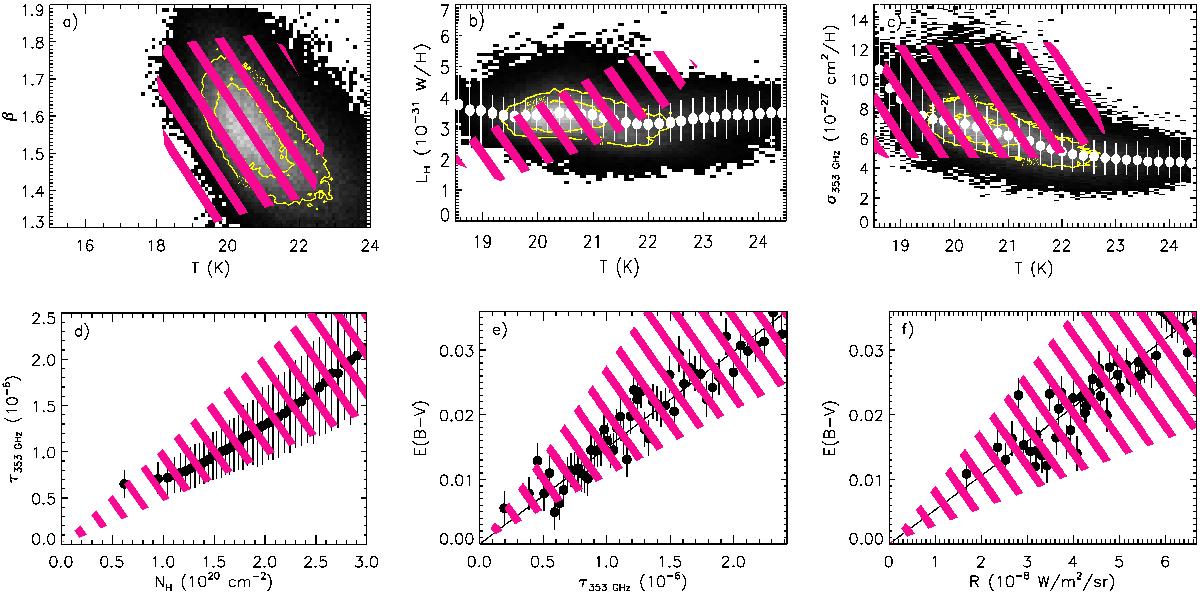Fig. 9

Observational data points are the same as in Figs. 1 to 6. The pink dashed areas show all the values of the dust observables that can be produced by the valid dust models presented in Sects. 3 and 4, i.e. all dust population combinations except 100% FeS nano-inclusions, silicates with 15 and 20 nm thick aromatic-rich carbon mantles, and aliphatic-rich carbon grains without mantles. For models with increased carbon abundances (see Sect. 4.3), we included only those with NH< 1020 H/cm2. Also plotted are models with a decreased carbon abundance. The radiation field is varied with ![]() . We further include models for which dust is illuminated by harder radiation fields than the standard ISRF (Sect. 3, for black-bodies at 20 000, 30 000, and 40 000 K and G0 = 1, 1.5, 2, 2.5, and 3). See Sect. 2.2 for description of the black and white lines and symbols.
. We further include models for which dust is illuminated by harder radiation fields than the standard ISRF (Sect. 3, for black-bodies at 20 000, 30 000, and 40 000 K and G0 = 1, 1.5, 2, 2.5, and 3). See Sect. 2.2 for description of the black and white lines and symbols.
Current usage metrics show cumulative count of Article Views (full-text article views including HTML views, PDF and ePub downloads, according to the available data) and Abstracts Views on Vision4Press platform.
Data correspond to usage on the plateform after 2015. The current usage metrics is available 48-96 hours after online publication and is updated daily on week days.
Initial download of the metrics may take a while.


